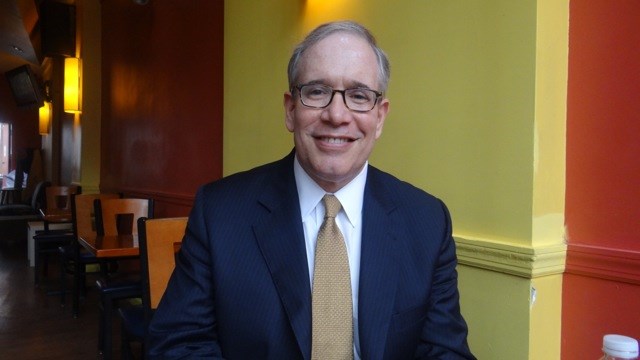By NYC Comptroller Scott Stringer

Photo: The Brooklyn Reader
In 1955, when Robert Moses bulldozed East Tremont in the Bronx to build a one-mile section of the Cross-Bronx Expressway, it all but destroyed a thriving community. This brazen act of civic violence demonstrated how highways can divide and dehumanize neighborhoods — and has served as a warning to our city ever since.
Today, that warning hangs over us as the city considers plans to revitalize another Moses mega-project: the Brooklyn-Queens Expressway (BQE). The BQE physically divides entire neighborhoods, leaving behind a noisy, polluting highway that elevates cars and trucks over pedestrians, literally and figuratively. As the BQE crumbles in disrepair, we have a rare opportunity to reimagine this roadway and our entire city in the process.
Whether it's the BQE or the Cross-Bronx Expressway, the Bruckner Expressway, the Major Deegan or the Grand Central Parkway, many of our major arteries are reaching the end of their useful lives and require extensive and costly rehabilitation work.
We are wasting a key moment in our city's history if we simply repair dilapidated highways and perpetuate a car culture that isn't working. It's a short-term Band-Aid to our long-term infrastructure needs.
It's time to embrace a new vision of a greener, more pedestrian-friendly city. That's why I'm proposing a plan to convert a two-mile stretch of the BQE into a linear park — in part by decking over the so-called Cobble Hill trench, essentially a concrete moat that cleaves the neighborhood — and create space at street level for parks, ball fields and other amenities New Yorkers want and need in their communities.
Dallas, St. Louis, and Philadelphia have already decked over existing highway trenches and created family-friendly spaces. Here at home, decking over parts of the Van Wyck, Bruckner and the Cross Bronx would enable the introduction of walking paths, small parks and lawns.
Other global cities, among them Seoul and Paris, have gone further, eliminating old highways and converting them into boulevards and walkways. In Seoul, a highway that once carried 168,000 cars a day is now a 3.6-mile linear park and ridership on a nearby rapid bus service has nearly supplanted all car trips. The evidence is clear: When you get rid of highways, people find other ways to get around.
It's time for the city, state, and federal DOT to jointly conduct a comprehensive audit of the New York City highway network. Before we waste billions of dollars reconstructing obsolete infrastructure, there should be a comprehensive review of all the city's highways with an eye toward scaling them back.
Any changes to our highway infrastructure must be coupled with extensive investments in public transit.
Our subway, bus and commuter rail service guidelines should be overhauled to provide high-frequency service all day, seven days a week. That means opening up the 41 LIRR and Metro-North commuter rail stops in the five boroughs — virtually locked behind an MTA paywall — by reducing fares for in-city trips to the price of a MetroCard swipe and allowing for free transfers. It means creating more rapid, bus-only lanes and boulevards, as was successfully implemented on Manhattan's 14th St.
In New York State, transportation emissions have risen by 20% over the last two decades and now account for 36% of the state's greenhouse-gas emissions, up from 28% in 1995. Our city's maze of highways contribute to poor air quality, high asthma rates, and pedestrian deaths near and around ramps. Exposure to car emissions is responsible for over 300 premature deaths in New York City each year and over 200 New Yorkers were killed in a car crash last year.
Sixty years after the construction of the East Tremont section of the Cross-Bronx, we must not repeat the mistakes of the past. Let's seize this opportunity to pave a green path forward that reclaims our neighborhoods and puts people first. If we're truly committed to building a future for our city, our children and our planet, the road from concrete jungles to urban oases is clear.



